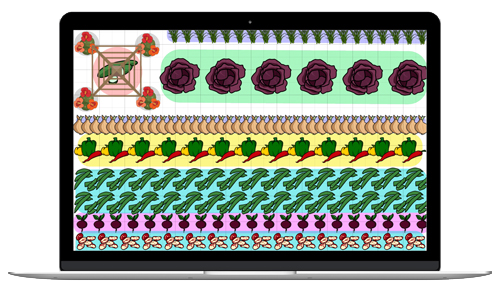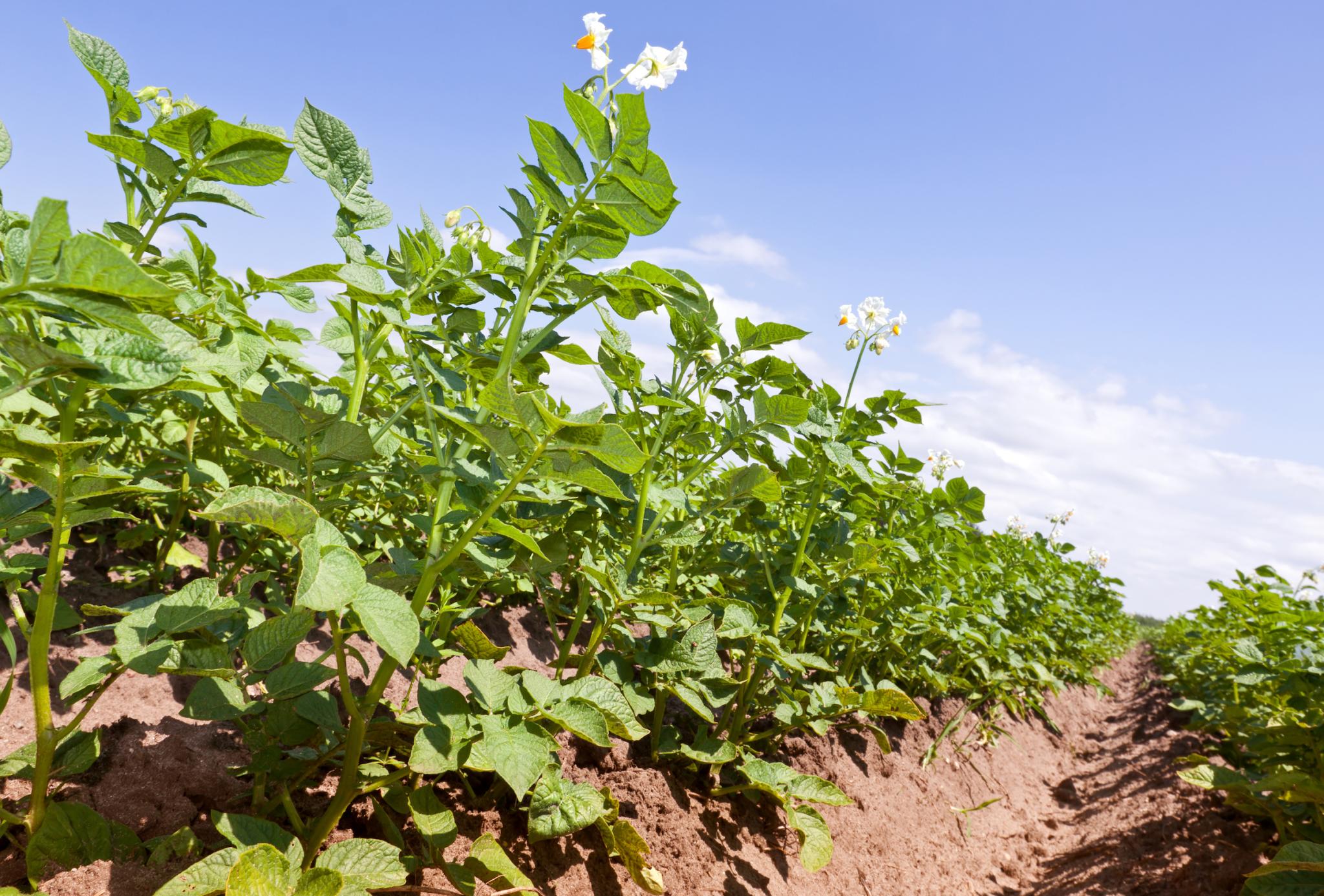
Planting, Growing, Harvesting, and Storing Potato Plants
The Almanac Garden Planner - Use It Free for 7 Days!
Plan your 2025 garden with our award-winning Garden Planner.
There are three classifications for potatoes based on when you harvest (vs. when you plant). If you harvest for storage, be sure to choose the right type:
- Early-season potatoes: first to be planted in early spring. Grow quickly (60 to 80 days), ready to harvest by early summer, tender flesh, thinner skin, store up to a few weeks.
- Mid-season potatoes (aka second early potatoes or “earlies”): mature in 80 to 100 days, typically lifted up from second half of summer, store up to a month.
- Late crops: mature in 100 to 130 days, best for storing, lasting 2 to 3 months in the right conditions; planted in August and harvested in fall.
Also, decide on the texture and flavor of your potatoes, and how you’d like to eat them:
- Dry-fleshed, mealy potatoes like russets and long white potatoes are used for baking, frying, and mashing. As mashed potatoes, they will not be gluey, and they will absorb gravy, butter or sour cream.
- Moist, waxy, round potatoes are great in soups, curries, frittatas, and salads because they don’t fall apart when cooked. You can pan-fry leftover boiled potatoes. When you mash waxy potatoes, they can become sticky.
- Red-skinned potatoes are often used for boiling or for potato salads.
Some popular potato varieties, such as ‘Yukon Gold’, fall somewhere in between truly waxy and mealy.
There are over 100 potato plant varieties! Go beyond the Idaho potato to explore more exotic and delicious options. See our article on choosing the best potato varieties!
Early Varieties:
- ‘Irish Cobbler’: tan skin, irregular shape (great heirloom potato for delicious mashed potatoes!)
- ‘Red Norland’: deep red skin, sweet, delicate flavor, great in potato salads or boiled
- ‘Mountain Rose’: red skin and pink flesh, resistant to some viruses
Mid-Season Varieties
- ‘Yukon Gold’: popular, tan skin and buttery-yellow flesh, mid to large size
- ‘Red Pontiac’: red skin, deep eyes (easiest and most adaptable red potato there is to grow)
- ‘Viking’: red skin, very productive
- ‘Chieftan’: red skin, resistant to potato scab, stores well
Late Varieties
- ‘Katahdin’: tan skin, resistant to some viruses
- ‘Kennebec’: tan skin, resistant to some viruses and late blight
- ‘Elba’: tan skin, large round tubers, resistant to blight and potato scab
- All Blue Potatoes
- ‘Fingerling Salad’ potatoes
Cooking Notes
Potatoes can be prepared in many ways: boiled, mashed, cut into pieces and roasted, french-fried, scalloped, made into dumplings or pancakes, grated into hash browns, and even brewed as alcoholic beverages.
Most potato dishes are served hot, but some are first cooked, then served cold, notably potato salad and potato chips.
ADVERTISEMENT
Love Farmers Almanac……my parents always used the Farmers Almanac since 1940s.
How do I get rid of potato scabs?
Hi, Ollie. There are several things you can do: choose resistant varieties (such as ‘Chieftan’ and ‘Elba’); try to maintain soil pH between 5.0 and 5.2 (you can decrease soil pH by adding elemental sulfur); dust seed potatoes with sulfur before planting; use pine needle mulch; keep soil moist after tubers start to form; and do not use manure.
This is my first time planting potatoes I planted at the end of apirl there growing very tall and the white flowers are there when do I harvest them
My potato plants have grown 2 1/2 to 3 feet tall. I placed the potato seeds to close together when planting. It was kind of fun to see them growing and
taking over my small raised garden beds. I will harvest middle to end of August. Looking for a useable crop. [ Skill level - 6 ] Thanks for all the great information. I hope to use the info in the future. [ THANKS ] John
I was not able to harvest my potatoes last summer. Will they report in the spring? Or what should I do for a new crop this year?
Hi, Mary. If you live in a place where the ground does not freeze over in the winter, your potatoes likely continued to grow and will now be crowded and small. When you dig them up, check to make sure they are not green and that the skin is still firm.
I have had a problem with scab. But last year, when I dug my potatoes they were beautiful. I had moved my potatoes to a totally new location. After storing in the basement, they are now developing a rough skin that doesn’t look like scab. The potatoes are solid and beginning to sprout, but when I peel them they have tiny pepper size dots that I cut out. I plant red Pontiac potatoes. What is causing this? The potatoes show no rot or softness. I do not use manure but do use leaves that are composted. I would be grateful for any suggestions. Thank you KK
Hi KK,
That was a great idea to grow your potatoes in a new location to avoid another issue with scab. Sounds like it led to a successful year and harvest.
Black spots or dots in potatoes can be attributed to internal bruises caused by the movement of your potatoes after harvest or how they are stored together. It could also be the result of sugar concentrations brought on by a number of pre- or post-harvest conditions. You are doing the right thing by removing the areas, but the condition should be generally harmless.
I plant Russets but my potatoes are very small…why?
Hi, Mark. Was your entire crop of potatoes very small? It is not unusual for potatoes to vary in size and to have some large, some medium, and some small ones. If they were all small, it was probably a water issue which could be that alternate wet and dry conditions stunted their growth. Potatoes prefer evenly moist conditions.














